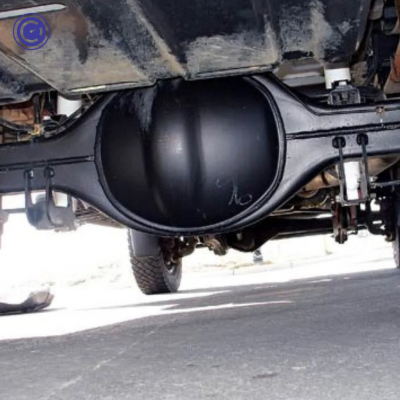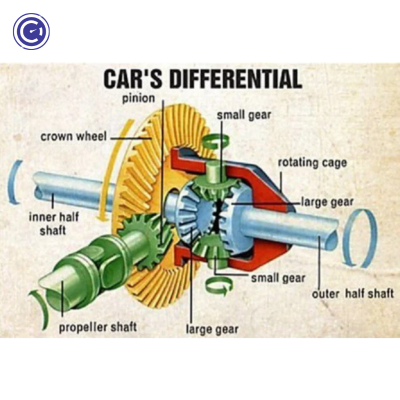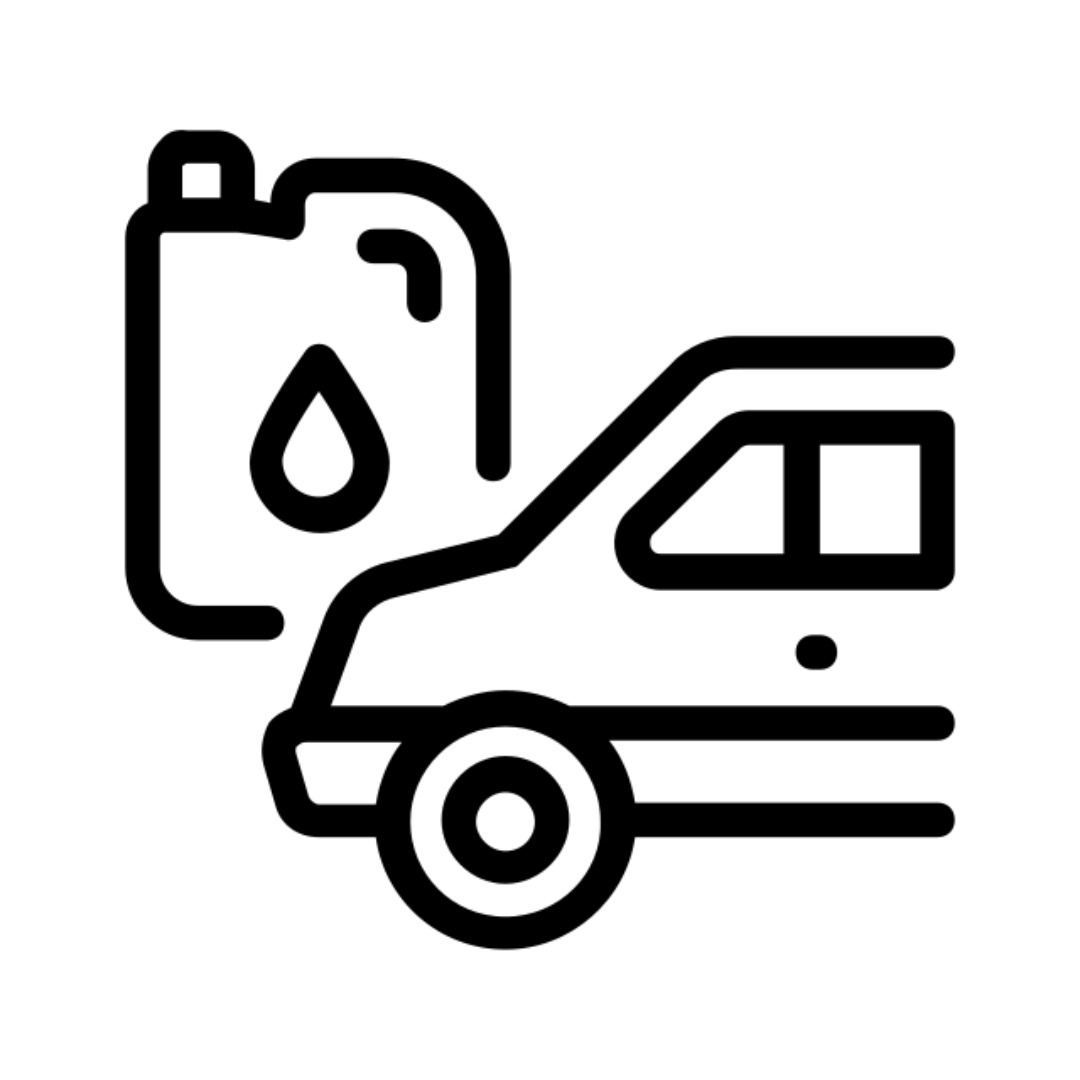Navigating the intricate world of car mechanics can be daunting for many car owners and future buyers. Among the crucial components of a vehicle’s drivetrain is the differential assembly – a key player in enhancing driving dynamics and vehicle handling. This blog post aims to demystify the differential assembly, explaining its function, types, and the importance of its maintenance.
Table of Contents
What is Differential Assembly?

The differential assembly is an integral component in the drivetrain of a vehicle, playing a critical role in the dynamics of driving, particularly when turning or navigating varied terrains. Understanding what a differential assembly is and how it functions is essential for any car owner or enthusiast.
Definition and Function

The differential assembly, often simply called the differential, is a mechanical device that divides the engine torque and allows each output to rotate at different speeds. Its primary function lies in balancing the speed of the wheels during turns.
How It Works
- Balancing Wheel Speed: When a vehicle turns, the wheels travel different distances. The differential allows the outer wheels to rotate faster than the inner wheels, preventing tire slippage and ensuring smooth turns.
- Power Distribution: It distributes the engine’s torque to the wheels, adjusting the power delivery based on each wheel’s traction.
Basic Components
A typical differential assembly consists of several key components:
- Gears: The core of the differential assembly includes a set of gears – the ring gear connected to the drive shaft, the pinion gear connected to the axle, and a set of smaller gears (spider gears) that allow for the difference in wheel speed.
- Differential Housing: This is the physical casing that holds the gears. It is typically a robust, sealed unit that protects the gears and holds the lubricating fluid.
Significance in Vehicle Dynamics
The differential is crucial for several reasons:
- Handling and Traction: It significantly impacts the handling of the vehicle, especially when cornering or driving on uneven surfaces.
- Enhancing Safety: By managing the power distribution and wheel rotation, differentials contribute to vehicle safety, particularly in conditions that require precise maneuvering.
Types of Differential Assemblies
In the automotive world, differentials are crucial for allowing the wheels on a vehicle to rotate at different speeds, particularly important when turning. There are various types of differentials, each designed to meet specific driving conditions and performance needs. Let’s explore the most common types you might encounter in vehicles today.
Open Differential
Characteristics
- Function: The most basic and common type, it allows each wheel to rotate at different speeds.
- Use: Ideal for standard driving conditions where high traction is not a priority.
Limitations
- Traction Issues: If one wheel loses traction, power is directed to that wheel, reducing overall grip.
Limited-Slip Differential (LSD)
Overview
- Enhanced Traction: Designed to overcome the traction flaws of open differentials.
- Mechanism: Distributes power more evenly between wheels, even if one has less traction.
Types
- Clutch-Type LSD: Uses clutches to limit the spin of a less-traction wheel.
- Torsen LSD: Utilizes gears instead of clutches for torque distribution.
Locking Differential
Functionality
- Locked Wheels: Locks both wheels on an axle together as if on a common shaft.
- Application: Best suited for off-road or low-traction situations.
Mode of Operation
- Automatic or Manual Locking: Can be engaged automatically or manually, depending on the design.
Torque-Vectoring Differential
Advanced Technology
- Dynamic Torque Distribution: Uses advanced electronics to distribute torque variably to each wheel.
- Enhanced Handling: Improves cornering and handling, especially in high-performance vehicles.
Electronic Differential
Modern Innovation
- Electronic Control: Uses sensors and electronic controls to adjust the distribution of torque to the wheels.
- Application: Often found in modern vehicles with advanced traction control systems.
Spool Differential
Simplicity and Strength
- Solid Connection: Essentially a ‘locked’ differential, where both wheels are permanently locked together.
- Use: Common in drag racing, where straight-line traction is critical.
Pros and Cons of Differential Assemblies
Differential assemblies are pivotal in vehicle dynamics, offering numerous advantages while presenting certain drawbacks. Understanding these pros and cons can help car owners make informed decisions about their vehicles, especially when considering different types of differentials for specific driving needs.
Pros of Differential Assemblies
Improved Traction and Handling
- Better Cornering: Differential assemblies allow wheels to turn at different speeds, improving cornering performance and traction, especially on uneven surfaces.
- Enhanced Stability: They help maintain vehicle stability, reducing the likelihood of skidding or losing control.
Versatility for Different Driving Conditions
- Adaptability: Different types of differentials are suited to various driving conditions, from everyday road use to off-roading and high-performance driving.
- Customization: Vehicle owners can choose a differential type that best suits their driving style and conditions.
Reduced Wear and Tear
- Even Tire Wear: By allowing wheels to rotate at different speeds, differentials help in even tire wear, prolonging tire life.
- Protection of Drivetrain: They reduce strain on the drivetrain during turns, preventing excessive wear.
Cons of Differential Assemblies
Complexity and Cost
- Higher Complexity: Advanced differential types, like limited-slip and torque-vectoring differentials, are more complex in design, potentially leading to higher repair and maintenance costs.
- Initial Expense: Some high-performance differentials can be expensive to install or retrofit.
Maintenance Requirements
- Regular Servicing: Differential assemblies require regular maintenance, including fluid changes, which can add to the overall cost of vehicle upkeep.
- Specialized Repairs: Repairing or replacing a differential often requires specialized knowledge and tools, which can be costly.
Limited Effectiveness in Certain Conditions
- Traction Limitations: In extremely slippery conditions, even advanced differentials may struggle to provide adequate traction.
- Performance Constraints: Some differential types, like open differentials, may not be suitable for high-performance or off-road applications.
Potential for Increased Fuel Consumption
- Heavier Components: Some differential types can add significant weight to a vehicle, potentially impacting fuel efficiency.
Signs of a Bad Differential Assembly
The differential assembly in your vehicle plays a crucial role in ensuring a smooth and safe driving experience. However, like any mechanical component, it can develop issues over time. Identifying the signs of a bad differential assembly is vital for timely maintenance and repair, which can prevent more serious and costly problems down the line. Here are some common indicators that your differential may be failing:
Unusual Noises
One of the most noticeable signs of a bad differential is unusual noise:
- Whining or Howling: A constant whine or howl during acceleration or deceleration can indicate issues with the differential gears.
- Rumbling or Grinding: These sounds, especially when turning, can point to worn bearings or gear damage within the differential.
Vibrations
Excessive vibrations coming from the vehicle, particularly at certain speeds or when turning, can be a symptom of differential trouble. This might be due to worn bearings or other damaged components within the differential assembly.
Fluid Leaks

Differential fluid is essential for the proper lubrication and cooling of the gears and bearings:
- Leaks Around the Differential: Look for signs of leaking fluid near the differential casing. A lack of adequate lubrication can quickly lead to serious damage.
Poor Handling
If the differential isn’t functioning correctly, it can affect the handling of your vehicle:
- Difficulty Turning: The car may become difficult to steer or handle during turns, which can be a sign that the differential is not allowing the wheels to rotate at different speeds as needed.
Differential Lock-Up
In severe cases, the differential may lock up:
- Inability to Move the Car: If the differential completely fails, it may lock, preventing the wheels from turning and rendering the vehicle inoperable.
Burning Smell
A burning odor coming from the differential area can indicate overheated fluid or components, often due to excessive friction and insufficient lubrication.
Diagnosing Differential Assembly Issues
To diagnose issues with your differential assembly:
- Visual Inspection: Check for leaks or damage to the differential housing.
- Listening for Noises: Pay attention to unusual sounds that may indicate gear problems.
- Test Driving: Feel for handling issues or vibrations that could suggest differential complications.
Maintenance of Differential Assembly
Maintaining your car’s differential is crucial for optimal performance:
- Fluid Checks and Changes: Regularly check and change the differential fluid to ensure proper lubrication.
- Regular Servicing: Include differential checks in your routine car maintenance to spot early signs of wear or damage.
When to Seek Professional Help
Given the complexity of differential repairs and replacements, it’s advisable to seek professional help for any significant issues or concerns.
Conclusion
The differential assembly plays a vital role in your vehicle’s performance. Understanding its function and maintaining it properly is key to ensuring a safe and smooth driving experience. Regular maintenance checks are crucial for the health of your differential and, by extension, your car.
